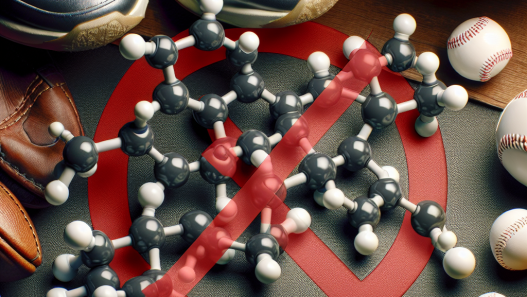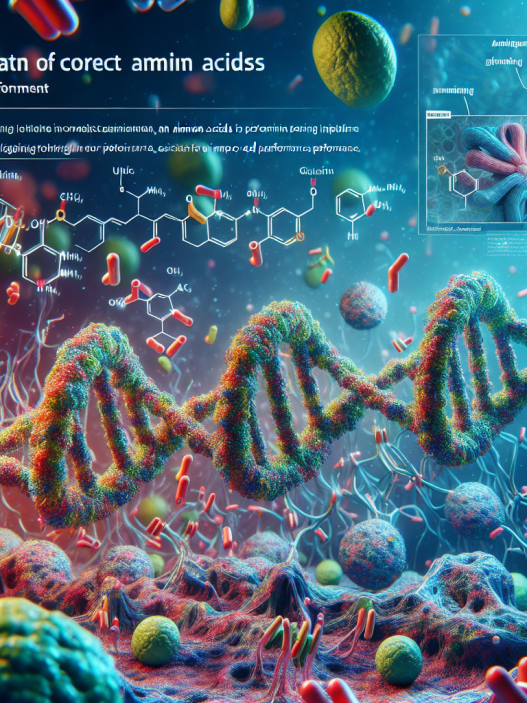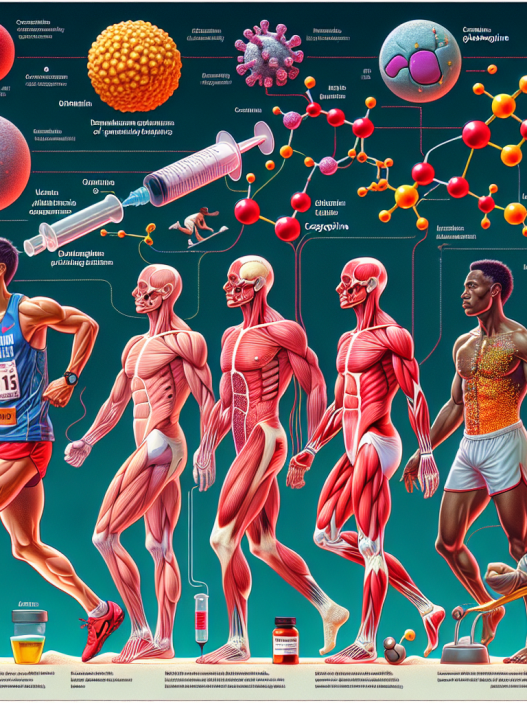-
Table of Contents
The Role of Amino Acids in Sports Performance
Sports performance is a complex and multifactorial phenomenon that is influenced by a variety of factors, including training, nutrition, genetics, and supplementation. In recent years, there has been a growing interest in the role of amino acids in sports performance, with many athletes and coaches incorporating them into their training and nutrition regimens. But what exactly are amino acids and how do they impact sports performance? In this article, we will explore the pharmacokinetics and pharmacodynamics of amino acids and their potential benefits for athletes.
What are Amino Acids?
Amino acids are the building blocks of proteins, which are essential for the growth, repair, and maintenance of tissues in the body. There are 20 standard amino acids that are used to build proteins, and they can be classified as essential, non-essential, or conditional. Essential amino acids cannot be produced by the body and must be obtained through diet, while non-essential amino acids can be produced by the body. Conditional amino acids are only essential in certain situations, such as during illness or injury.
In addition to their role in protein synthesis, amino acids also play a crucial role in various metabolic processes, including energy production, neurotransmitter synthesis, and immune function. This makes them particularly important for athletes who require optimal physical and mental performance.
Pharmacokinetics of Amino Acids
The pharmacokinetics of amino acids refers to how they are absorbed, distributed, metabolized, and eliminated by the body. Amino acids are primarily absorbed in the small intestine and then transported to the liver, where they are either used for protein synthesis or released into the bloodstream for use by other tissues. The rate of absorption and distribution of amino acids is influenced by various factors, including the type and amount of amino acids consumed, the presence of other nutrients, and the individual’s metabolic state.
Once absorbed, amino acids are metabolized by the liver and other tissues, where they are either used for protein synthesis or converted into other compounds, such as glucose or fatty acids. The rate of metabolism is also influenced by various factors, including the type and amount of amino acids consumed, the individual’s metabolic state, and the presence of other nutrients.
The elimination of amino acids occurs primarily through the kidneys, where they are filtered and excreted in the urine. The rate of elimination is influenced by various factors, including the individual’s kidney function, hydration status, and the presence of other substances that may compete for elimination.
Pharmacodynamics of Amino Acids
The pharmacodynamics of amino acids refers to how they exert their effects on the body. Amino acids have a wide range of functions in the body, and their effects on sports performance are multifactorial. Some of the key pharmacodynamic effects of amino acids on sports performance include:
- Promoting protein synthesis: As mentioned earlier, amino acids are the building blocks of proteins, and adequate intake is essential for muscle growth and repair. Studies have shown that supplementing with essential amino acids can increase muscle protein synthesis and improve muscle recovery after exercise (Churchward-Venne et al. 2012).
- Enhancing energy production: Amino acids can be used as a source of energy during exercise, particularly during prolonged or intense exercise. This is because they can be converted into glucose or fatty acids, which are then used as fuel by the muscles (Gualano et al. 2011).
- Regulating neurotransmitter synthesis: Amino acids are precursors for neurotransmitters, which play a crucial role in cognitive function and mood. Studies have shown that supplementing with certain amino acids, such as tyrosine and tryptophan, can improve cognitive function and mood in athletes (Strüder et al. 1998).
- Supporting immune function: Intense exercise can suppress the immune system, making athletes more susceptible to illness and infection. Amino acids, particularly glutamine, have been shown to support immune function and reduce the risk of infection in athletes (Castell et al. 1996).
Real-World Examples
The use of amino acids in sports performance is not a new concept. In fact, many athletes have been incorporating them into their training and nutrition regimens for years. One example is professional bodybuilder and seven-time Mr. Olympia, Phil Heath, who credits his success to his strict diet and supplementation regimen, which includes a variety of amino acids.
Another example is Olympic gold medalist and world record holder in the 100-meter dash, Usain Bolt. Bolt has been known to consume amino acid supplements before and after his races to support his energy levels and muscle recovery.
Expert Opinion
According to Dr. John Ivy, a leading researcher in sports nutrition, “Amino acids play a crucial role in sports performance, particularly in the areas of muscle growth, energy production, and immune function. Supplementing with amino acids can provide athletes with the necessary building blocks for optimal physical and mental performance.”
Conclusion
In conclusion, amino acids play a vital role in sports performance, with their effects on protein synthesis, energy production, neurotransmitter synthesis, and immune function. Athletes can benefit from incorporating amino acids into their training and nutrition regimens, but it is essential to consider individual needs and consult with a healthcare professional before starting any supplementation regimen. With proper use and dosage, amino acids can be a valuable tool for athletes looking to optimize their performance and reach their full potential.
References
- Castell, L. M., Poortmans, J. R., & Newsholme, E. A. (1996). Does glutamine have a role in reducing infections in athletes? European Journal of Applied Physiology and Occupational Physiology, 73(5), 488-490.
- Churchward-Venne, T. A., Burd, N. A., Mitchell, C. J., West, D. W., Philp, A., Marcotte, G. R., … & Phillips, S. M. (2012). Supplementation of a suboptimal protein dose with leucine or essential amino acids: effects on myofibrillar protein synthesis at rest and following resistance exercise in men. The Journal of Physiology, 590(11), 2751-2765.
- Gualano, A. B., Bozza, T., Lopes, D. C., Roschel, H., Dos Santos, C. A., Luiz, M. M., … & Bonfá, E. (2011). Branched-chain amino acids supplementation enhances exercise capacity and lipid oxidation during endurance exercise after muscle glycogen depletion. The Journal of Sports Medicine and Physical Fitness, 51(1), 82-88.


















